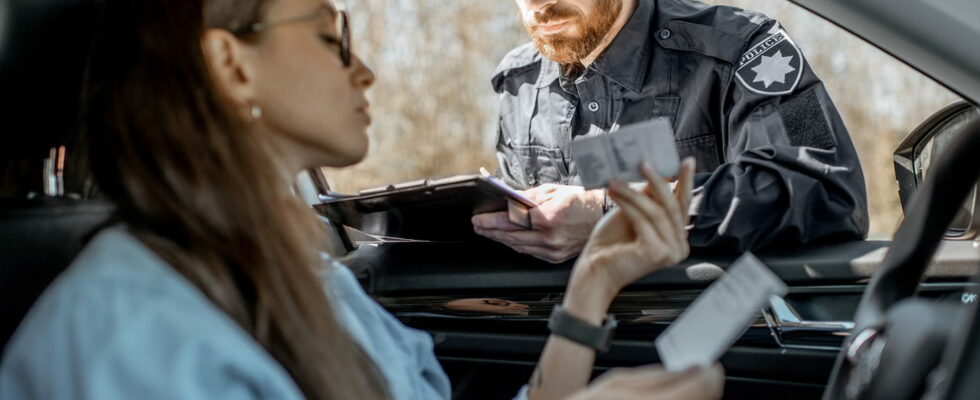The European Commission is working on the implementation of a common digital driving license for all EU member countries. Objectives: to simplify procedures and fight against cross-border traffic offences.
Last year, more than 20,000 people lost their lives on the roads of the European Union, in particular pedestrians, cyclists and riders of scooters and motorcycles. Faced with this observation, the European Commission announced in a press release want to set up a common digital license for the 27 countries of the European Union. “The European Union would be the first region in the world to have digital permits recognized across borders”, she explains. If it is already possible to drive in France with a license obtained in another European country and vice versa, the goal is to go further in cooperation between States. Thus, each European motorist would have the same digitized version of their license on their smartphone, which would make it easier to replace, renew or exchange thanks to online procedures on a dedicated portal. This project would be accompanied by new provisions aimed at cooperating to apply sanctions in the event of cross-border traffic offences.
Digital driving licence: a common document for the whole EU
The European Commission is proposing to introduce a digital driving licence, which people would store on their smartphone instead of the physical card slipped into their wallet. This will facilitate the administrative procedures in the event of replacement, renewal or exchange, “since all procedures will be done online” – this is already the case in France, but it is not systematic in all the countries of the Union. This dematerialized license would make “easier for citizens of third countries with comparable road safety standards to exchange their driving license for an EU licence”. Once it is well established, the European Commission wants to make it the default document for all drivers, even if it will still be possible to request a European driving license in paper version.
We propose the creation of a digital driving license, valid & recognized in all EU Member States
The European Union would be the 1st region in the world to have digital permits recognized across borders #RoadSafety
— European Commission (@UEFrance) March 4, 2023
AT On the occasion of this new licence, the European Commission is also revising the regulations in order to adapt to driving habits. Thus, it provides for a probationary period of at least two years after passing the driving test for novice drivers as well as a zero tolerance rule with regard to drunk driving because, even if young drivers represent only 8% of all car drivers, two out of five fatal collisions involve a driver under the age of 30. At the same time, it wants to improve training to better take into account the safety of pedestrians and cyclists, as well as users of electric bicycles and scooters. It also wants to allow young people to pass their driving test and start driving cars and trucks from the age of 17, provided they are accompanied, in order to acquire driving experience. and thus make up for the shortage of truck drivers. Finally, due to the climate crisis, it intends to make a transition towards “zero emission vehicles”.
Digital driving licence: strengthening cross-border sanctions
But if Europe seeks to simplify the procedures for obtaining the permit, it is also to facilitate the transmission of data between the Member States and, as a result, to apply the sanctions more to the perpetrators of offences. Indeed, if cooperation between bordering countries has already been improved for a few years thanks to dematerialized files, it still suffers from some shortcomings. According to the European Commission, around 40% of cross-border crimes were committed with impunity in 2019, either because the perpetrator was not identified or because payment was not made. An online European permit would make things easier. Motorists could access an online portal bringing together the different traffic rules of member countries and allowing them to pay any fines imposed on them directly. A system that should allow “equal treatment of resident and non-resident offenders”.
The European Commission’s proposals also aim to fill certain gaps. Currently, European legislation only takes into account the most frequent and flagrant offenses such as speeding or drunk driving. It could therefore extend the scope of traffic offenses covered to driving in the wrong direction, dangerous parking and overtaking, crossing a white line, using an overloaded vehicle, failure to respect rules relating to the use of emergency escape routes and failure to maintain a sufficient distance from the vehicle in front. “The set of proposals aims to (…) that there is no impunity for those who infringe road safety rules across borders, thanks to a better cross-border exchange of information on infringements and disqualification for the most serious Driving safety is crucial in our efforts to halve the number of road deaths and serious injuries by 2030“explains Adina Vălean, the European Commissioner for Transport.
All these proposals are currently under study and will have to be examined by the European Parliament and the Council before possible application. Once this is done, detailed rules will have to be laid down on the characteristics of this European digital driving license on the issues of interoperability, security, testing, verification and the interface of the title, but also on the administrations. Not to mention that it will be necessary to standardize traffic rules, each country having its own.
